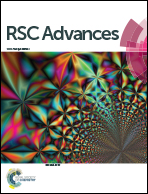A small eggshell Ni/SFC3R catalyst for C5 petroleum resin hydrogenation: preparation and characterization
Abstract
A small eggshell Ni-based catalyst, supported in a fluid catalytic cracking catalyst residue (SFC3R) with distinct outer shell regions, was synthesized by incipient wetness impregnation using n-heptane and nickel nitrate solution and was applied to C5 petroleum resin hydrogenation. For comparison, a uniform Ni/SFC3R catalyst was prepared by conventional impregnation. The eggshell Ni/SFC3R catalyst exhibited higher activity and better stability than the uniform Ni/SFC3R catalyst for C5 petroleum resin hydrogenation because of its nickel component distribution in the outer region of the particles, small NiO particles, and interaction of NiO–SFC3R. The morphology and microstructure of the micron-sized Ni/SFC3R particles were determined through a FIB (focused ion beam)-cutting technique combined with SEM-EDX. The results showed that the eggshell thickness was approximately 1.8 μm.


 Please wait while we load your content...
Please wait while we load your content...